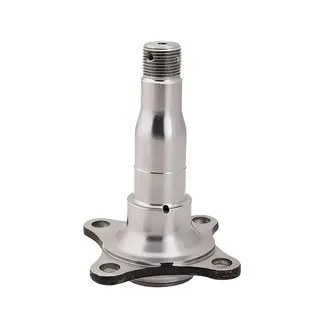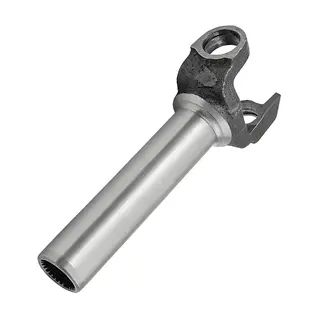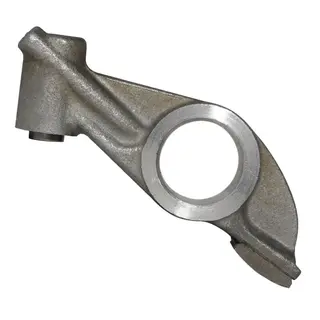In modern manufacturing, forging production plays a crucial role. Whether it is precision components for automotive engines or key parts for the aerospace sector, forging processes are central to ensuring product performance and quality. However, forging production is not without challenges, involving complex processes and numerous variable controls. This article delves into the key points of quality control in forging production and how to effectively prevent and resolve common defects, helping readers to fully understand this critical process.
The primary goal of forging production is to manufacture forged parts that meet design specifications. This not only includes precise shape and size but also fulfilling strict performance requirements during actual use. These performance requirements cover strength, plasticity, impact toughness, fatigue strength, fracture toughness, stress corrosion resistance, and other aspects. For parts working in high-temperature environments, additional considerations must include high-temperature tensile properties, endurance, creep resistance, and thermal fatigue properties. In short, forging production must not only "shape" the parts but also "form their essence," ensuring that the components can reliably operate under various complex conditions.
Raw materials are the foundation of forging production, and their quality directly impacts the final product's performance. Common raw materials for forging include cast ingots, rolled products, extrusions, and forged billets. Among these, rolled products, extrusions, and billets are semi-finished products derived from cast ingots through various processing techniques. When selecting raw materials, strict control of chemical composition and microstructure is essential, as even minor deviations can lead to serious quality issues during subsequent forging processes.
Chemical composition is a key factor influencing material performance. For example, elements such as sulfur (S), boron (B), copper (Cu), and tin (Sn) can form low-melting-point phases, leading to hot brittleness in the forged parts. To achieve fine-grained steel, the residual aluminum content in the steel must be strictly controlled within a range, typically between 0.02% and 0.04% (by mass). If the aluminum content is too low, it may fail to effectively control the grain size, resulting in substandard grain refinement of the forged part; if too high, it can cause woodgrain or tearing fractures during pressure processing. In austenitic stainless steels, the higher the content of nickel (Ni), silicon (Si), aluminum (Al), and molybdenum (Mo), the more ferritic phase is present, which can lead to the formation of banded cracks and make the part magnetic—an undesired property in certain applications.
The microstructure of raw materials is also crucial. If defects such as shrinkage cavities, subsurface bubbling, severe carbide segregation, coarse non-metallic inclusions (slag), dendritic grains, porosity, non-metallic inclusions, white spots, oxidation films, segregation bands, and foreign metal contamination are present, cracking can easily occur during forging. Additionally, surface defects like cracks, folds, scars, and coarse crystalline rings can directly cause surface cracks in the forged parts. Therefore, rigorous testing and screening of raw materials during procurement and storage are essential to ensure they meet the requirements for forging production.
The forging process typically involves multiple stages, including material cutting, heating, forming, post-forging cooling, acid pickling, and post-forging heat treatment. Each stage has its unique parameters and operational requirements, and any issue in one link can result in defects in the final product. Therefore, optimizing and controlling the forging process is crucial for ensuring the quality of the forged parts.
Heating is a critical stage in forging production, providing the necessary temperature conditions for the subsequent forming process. Heating process parameters include furnace temperature, heating temperature, heating rate, soaking time, and gas composition. If the heating temperature is too high or the heating time too long, defects like decarburization, overheating, and overburning can occur. Decarburization can reduce surface hardness and wear resistance; overheating can cause coarse grains, reducing material toughness and plasticity; and overburning can lead to severe internal structural damage, rendering the material unusable.
For billets with large cross-sectional sizes, poor thermal conductivity, and low plasticity, if the heating rate is too fast and soaking time too short, temperature distribution may become uneven, causing thermal stress and cracking. Therefore, during heating, the heating rate and soaking time must be controlled appropriately based on the material and size of the billet to ensure uniform heating and avoid thermal stress.
The forming process is the core of forging production, determining the final shape and size of the forged part. Forming process parameters include deformation method, degree of deformation, deformation temperature, deformation speed, stress state, die condition, and lubrication conditions. Improper forming processes can lead to defects like coarse grains, uneven grain distribution, various cracks, folds, internal flow marks, eddy currents, and residual casting structure.
For example, when upsetting the billet, longitudinal or 45° cracks may form on the side surface, and when upsetting ingots, residual casting structures may remain at the upper and lower ends; when drawing a rectangular section billet, transverse cracks and corner cracks may appear on the surface, and diagonal and transverse cracks may develop internally. Open-die forging may result in incomplete filling, folding, and misalignment. Therefore, during forming, the deformation method, degree, temperature, and speed must be carefully selected according to the forming method and billet characteristics, and die condition and lubrication must be optimized to reduce defects.
Post-forging cooling is equally important. Improper cooling processes can cause cooling cracks, white spots, and networked carbides. Materials like austenitic and ferritic heat-resistant stainless steels, high-temperature alloys, aluminum alloys, magnesium alloys, and certain copper and titanium alloys may develop structural defects during heating and cooling, which cannot be corrected by heat treatment. For materials that undergo phase transformations during heating and cooling, such as structural steels and martensitic stainless steels, improper forging processes or residual defects in raw materials can significantly impact the quality of the forged part after heat treatment.
For example, defects in certain forged parts' structure may be improved by post-forging heat treatment, resulting in satisfactory properties. For instance, coarse grains and Widmanstätten structures in overheated structural steel forgings can be resolved by normal heat treatment. However, some defects, such as carbide networks or bands in high-alloy tool steels, are difficult to eliminate through standard heat treatment and require specialized techniques like high-temperature normalizing, repeated normalizing, low-temperature decomposition, or high-temperature diffusion annealing.
Different materials have different mechanical behaviors and structural changes during forging due to variations in composition and microstructure. Therefore, during forging production, corresponding measures must be taken for each material type to effectively prevent and resolve potential defects.
The main defects in high-alloy tool steel forgings with a ledeburite structure include coarse carbide particles, uneven distribution, and cracks. Due to the high alloy content and complex phase transformation process, this material is very sensitive to heating temperature and deformation conditions. If the heating temperature is too high or the deformation degree improper, carbide particles may grow abnormally, reducing toughness and strength. Moreover, its high hardness and brittleness make cracking easier. Therefore, when forging high-alloy tool steel, strict control of heating temperature and deformation parameters is necessary to ensure fine and even carbide distribution, and suitable lubrication should be used to reduce cracking.
The main defects in high-temperature alloy forgings are coarse grains and cracks. These materials, designed to operate in high-temperature environments, require extremely tight control over grain size and uniformity. Improper heating or rapid cooling during forging can lead to grain coarsening, reducing high-temperature performance. Additionally, due to their high thermal expansion coefficient and low plasticity, cracks can easily form during forging. Therefore, precise temperature control and proper cooling processes are necessary to maintain grain size within required limits and reduce crack formation.
Austenitic stainless steel forgings may suffer from defects such as chromium depletion at grain boundaries, intergranular corrosion susceptibility, ferritic banding, and cracking. Due to its unique chemical composition and microstructure, this material is sensitive to both heating temperature and cooling rate. Excessive heating temperature or rapid cooling can lead to chromium depletion at grain boundaries, reducing the material’s resistance to intergranular corrosion. Additionally, due to its low thermal conductivity and high thermal expansion coefficient, cracking may occur during forging. Therefore, strict control of heating temperature and cooling rate, along with suitable heat treatment processes, is essential to improve intergranular structure and enhance corrosion resistance.
The main defects in aluminum alloy forgings are coarse grains, folds, eddy currents, and internal flow marks. Due to its lower melting point and higher thermal expansion coefficient, aluminum alloy is very sensitive to heating temperature and deformation conditions during forging. Improper heating temperature or excessive deformation can cause coarse grain formation, reducing strength and toughness. Moreover, due to its low plasticity and high fluidity, defects such as folding and eddy currents can easily occur. Therefore, strict control of heating temperature and deformation parameters, along with appropriate lubrication, should be employed to reduce these defects and ensure optimal material performance.
Forging production is a complex and delicate process that involves raw material selection, heating, forming, cooling, and other stages. Each stage has its own unique process parameters and operational details, and any issue in any step can lead to defects in the forged part. Therefore, it is crucial to strictly control raw material quality, optimize and control the forging process, and adopt appropriate measures for different materials to effectively prevent and resolve defects. Through this detailed introduction, readers should now have a deeper understanding of forging production, as well as the key points of quality control and defect prevention. In practical production, continuous experience accumulation and process optimization are essential to improve the quality and efficiency of forging production, providing strong support for the development of modern manufacturing.



